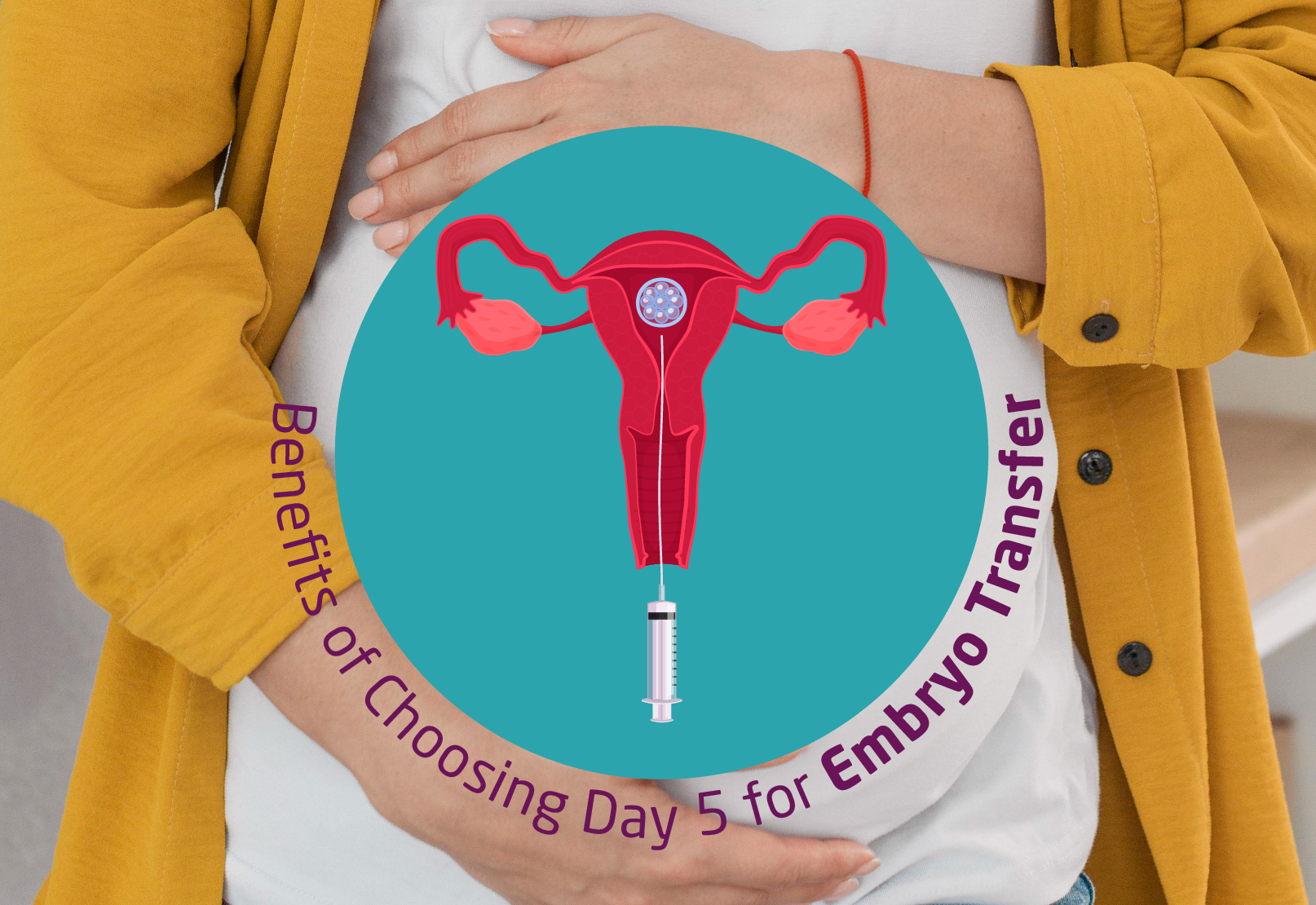Day 5 for Embryo Transfer
When it comes to in vitro fertilization (IVF), the timing of the embryo transfer has a major influence on the success of the procedure. A crucial decision is whether to transfer a day 3 (cleavage stage) embryo or a day 5 (blastocyst stage) embryo. At present, frozen embryo transfer has become popular owing to increased awareness about IVF treatments, which effectively boost the chances of a successful pregnancy.
Must Read: Low Levels of Testosterone in Women
Difference between blastocyst (Day 5) and cleavage Stage (Day 3)
Developmental stages:
- Day 3 embryo (cleavage stage): At this stage, embryos consist of around 6-8 cells. They are still in the early phase of cell division and are yet to reach the uterus.
- Day 5 embryo (blastocyst stage): By day 5, the embryo has developed into a blastocyst, with about 100-150 cells. The blastocyst is differentiated into two cell types: the trophectoderm, which forms the placenta, and the inner cell mass, which will develop into the fetus.
Selection Difference:
-
- Day 3 embryo: Embryos selected at the cleavage stage can present challenges as some may appear healthy initially but may not continue developing further.
- Day 5 embryo: Allowing embryos to develop to the blastocyst stage provides a more comprehensive assessment of their potential. Those that reach this stage are typically stronger and more likely to successfully implant, potentially leading to higher success rates in IVF treatments.
Implantation potential:
- Day 3 embryo: Implantation rates tend to be lower with cleavage stage embryos because they are less mature and may not be as well-suited to the uterine environment.
- Day 5 embryo: Blastocysts have a higher implantation potential since they are more advanced in development, closely mimicking the natural timing of embryo arrival in the uterus.
As reproductive medicine continues to advance, day 5 transfers are gaining popularity, offering hopeful parents improved chances of achieving successful and healthy pregnancies. Although, this can not be the blanket approach for all transfers and choosing the stage of embryo transfer varies from case to case. The decision is taken with prior information to the couple after discussion with the reproductive medicine specialist.
Understanding the differences between blastocyst and cleavage-stage embryos helps patients make informed decisions for successful conception. This approach aligns with natural embryo development processes, leading to better IVF outcomes.
At Ferticity IVF & Fertility Clinics, we offer advanced reproductive technologies, including safe frozen embryo transfer. Contact us to learn more about how different embryo transfer options can enhance your chances of a successful pregnancy.

